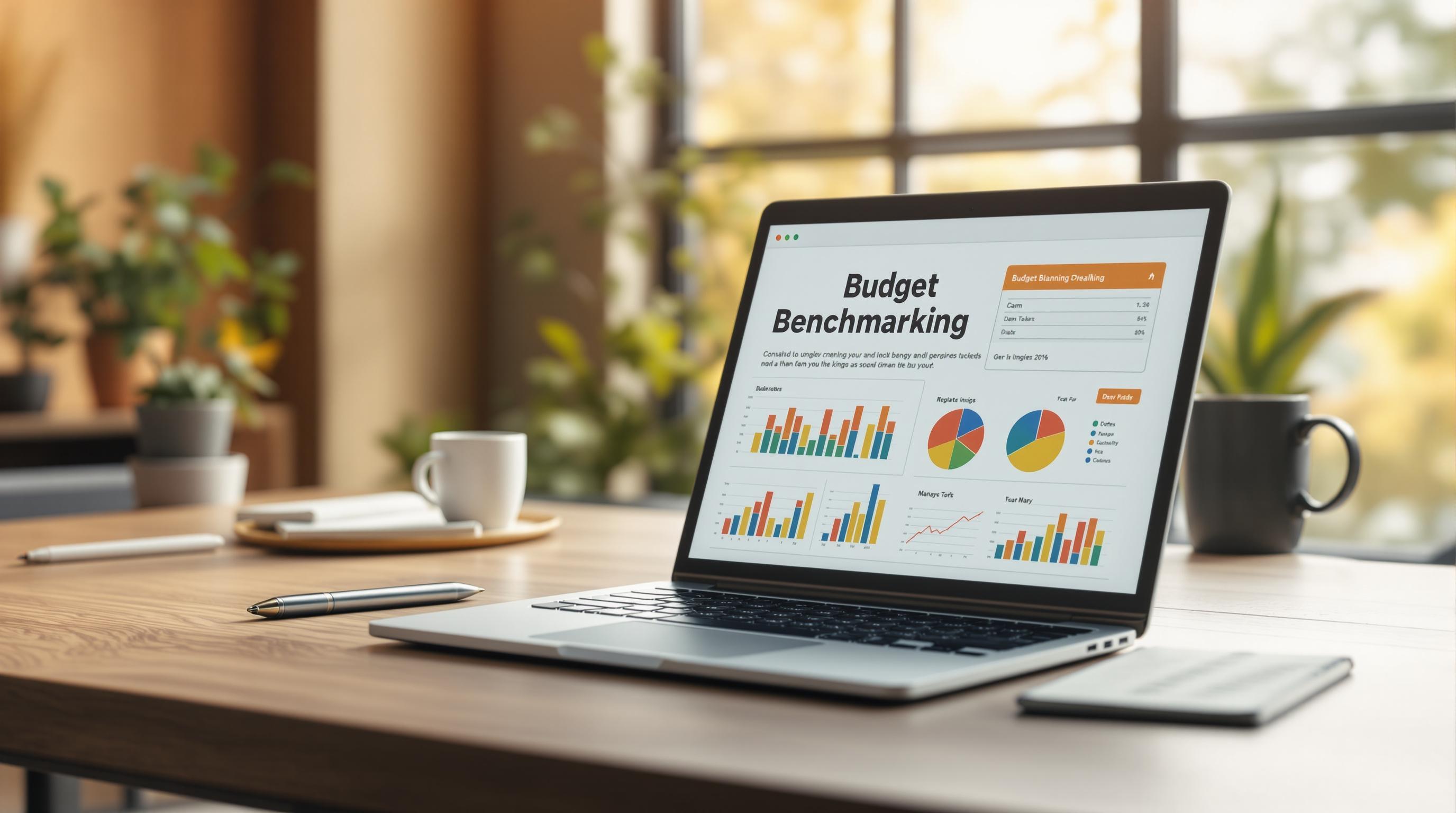Mobile navigation is crucial for SEO and user experience. A clear, fast, and responsive menu helps users find what they need, keeps them engaged, and improves search rankings. Poor navigation frustrates users, increases bounce rates, and hurts SEO performance.
Key Takeaways:
- Simplify Menus: Use clear labels, limit menu depth to 2-3 levels, and focus on 5-7 main categories.
- Optimize for Thumb Use: Place buttons where thumbs can easily reach and ensure they’re at least 48x48 pixels.
- Speed Up Loading: Compress files, streamline menu items, and use lazy loading for images.
- Add Structured Data: Help search engines understand your site hierarchy with schema markup.
- Accessibility Matters: Use readable fonts, proper spacing, and semantic HTML for all users.
| Factor | Impact on SEO & UX |
|---|---|
| Page Speed | Improves rankings and user retention. |
| Responsive Design | Ensures mobile-friendliness. |
| Structured Data | Boosts search visibility. |
| Accessibility | Enhances usability for everyone. |
Quick Tip: Tools like Google’s Mobile-Friendly Test, Lighthouse, and heatmaps can help identify and fix navigation issues.
A well-designed mobile navigation system is simple, fast, and user-friendly. It’s key to better SEO and happier users.
Checklist for Mobile-Friendly Navigation
Simplify Navigation Menus
Mobile navigation should be clear and easy to use. Keep your menu structure simple and well-organized to help users find what they need quickly. Focus on the most important pages based on how users interact with your site.
SEO experts stress the value of concise navigation. As Bruce Clay explains:
A short-and-sweet mobile nav is a win-win for SEO and your users. It preserves the flow of link equity to your most important pages while also helping users get around.
| Navigation Element | Best Practice | SEO Benefit |
|---|---|---|
| Menu Labels | Use clear, descriptive keyphrases | Boosts search relevance |
| Menu Depth | Limit to 2-3 levels | Improves crawlability |
| Item Count | Stick to 5-7 main categories | Lowers bounce rates |
Design for Easy Thumb Use
Make sure navigation elements are placed where they’re easy to reach with a thumb. Buttons and links should be large enough to tap without errors - aim for at least 48x48 pixels with enough space between them to avoid accidental clicks.
The middle of the screen is the easiest area for thumb interaction, while top corners can be harder to reach. Apple’s mobile site is a great example, with menu options positioned for effortless thumb access.
Use Responsive Design for Menus
On smaller screens, hamburger menus can simplify navigation without sacrificing accessibility. Ensure your menus work smoothly in both portrait and landscape orientations and are functional on all devices. Smooth transitions and responsiveness are key to a good user experience.
Your Mobile Navigations STINK! Better UX AWAITS!
SEO Tips for Better Mobile Navigation
Improving navigation can have a big impact on your mobile SEO performance. Let’s break down how to make your site more mobile-friendly.
Speed Up Page Loading
Page speed is crucial for mobile SEO. Slow-loading pages frustrate users and can hurt your rankings. Complex menus with too many links or unoptimized elements often cause delays. Google favors mobile pages that load quickly.
Here’s how to speed things up:
- Use lazy loading for images so they load only when needed.
- Streamline menu items to avoid overwhelming users and slowing the site.
- Compress files like images, CSS, and JavaScript to reduce load times.
Add Structured Data to Menus
Structured data helps search engines understand your site’s navigation and content structure. Adding schema markup to your menus can improve your visibility in search results and make site links display better in search engine results pages (SERPs).
"A mobile-first approach ensures that navigation and content are optimized for smaller screens, improving overall SEO performance. Structured data plays a crucial role in helping search engines understand the content hierarchy", explains Google's Mobile-Friendly Test documentation.
Avoid Common Navigation Mistakes
Some navigation choices can hurt both SEO and user experience. Watch out for these pitfalls:
- Hidden Navigation: Don’t completely hide navigation options - it makes crawling harder for search engines.
- Overly Complex Layouts: Simplify multi-level dropdown menus to make them faster and easier to use.
- Broken Internal Links: Fix dead links to maintain user trust and ensure search engines can crawl your site efficiently.
Tools like Google’s Mobile-Friendly Test and heatmaps can help you spot and address navigation issues. For structured data, Google’s Structured Data Markup Helper is a great resource to make implementation easier.
sbb-itb-a84ebc4
Improving User Experience with Navigation
Organize Content with Clear Headings
Good navigation starts with a well-organized content structure. Use descriptive headings that clearly outline what users can expect. For example, replace vague labels like "Learn More" with specific ones like "Product Features" or "Service Locations."
Stick to a logical hierarchy: H1 for main titles, H2 for sections, and H3 for subsections. This makes your content easier to scan, especially on mobile devices where space is limited. A well-structured layout not only helps users but also assists search engines in understanding your content.
And don’t stop at organization - accessibility is just as important for a smooth user experience.
Focus on Accessibility Features
Make your site easy to use for everyone by incorporating accessibility features. Start with readable font sizes (at least 14px) and high-contrast color schemes (minimum 4.5:1 ratio) to ensure menus are legible. Interactive elements, like buttons, should be at least 44x44 pixels and spaced out to prevent accidental clicks.
Accessibility isn’t just about usability - it also helps search engines better understand your site. Use tools like ARIA labels, semantic HTML, and keyboard-friendly navigation to make your site functional for all users.
Here are some key accessibility tips:
- Use proper semantic HTML to improve how search engines interpret your content.
- Ensure compatibility with screen readers for visually impaired users.
- Support keyboard navigation for users with mobility challenges.
Resources for Mobile Navigation and SEO
Check Out the Marketing Funnels Directory

The Marketing Funnels Directory provides resources to help improve mobile navigation while supporting your marketing funnel objectives. Pairing these strategies with the right tools can make a big difference in how well your mobile navigation performs.
Tools to Optimize Mobile Navigation
Several tools are available to fine-tune your site's mobile navigation. For example, Google's Mobile-Friendly Test gives you insights specifically focused on navigation optimization. Heatmapping tools like Hotjar and Crazy Egg let you see how users interact with your navigation, offering valuable data for improvements.
| Tool Name | Purpose |
|---|---|
| Google Mobile-Friendly Test | Highlights navigation-related optimization tips |
| Hotjar/Crazy Egg | Tracks user interaction patterns visually |
| WAVE | Tests navigation for accessibility compliance |
| Lighthouse | Evaluates speed and SEO performance |
With the rise of voice search, it's becoming increasingly important to optimize navigation for voice commands. Tools like Google's Structured Data Markup Helper make adding schema markup simpler, while breadcrumb markup helps clarify your site's structure for both users and search engines.
Here’s how these tools can help:
- Use Lighthouse to monitor performance.
- Test accessibility with WAVE.
- Analyze user behavior through heatmaps from Hotjar or Crazy Egg.
- Implement schema markup for better search engine visibility.
These resources provide a practical foundation for improving your site's mobile navigation.
Conclusion and Key Points
Mobile navigation design is a key factor in both search engine performance and user engagement. Keeping navigation simple not only helps search engines index your site better but also makes users happier.
Studies highlight that simplifying navigation is the first step to success. A clean menu structure ensures important pages retain their link value and aligns well with Google's mobile-first indexing.
The secret to great mobile navigation lies in blending technical elements with user-friendly design. Using tools like schema markup can boost search visibility. Big names like Apple and Amazon demonstrate this perfectly - Apple keeps navigation minimal, while Amazon efficiently organizes its vast catalog for mobile users.
Key Factors for Mobile Navigation Success
| Factor | SEO & UX Benefits |
|---|---|
| Page Speed | Helps rankings, lowers bounce rates, and increases engagement |
| Responsive Design | Improves indexing and ensures a smooth experience on all devices |
| Structured Data | Enhances visibility and provides better context for content |
| Accessibility | Improves usability for everyone and strengthens rankings |
Accessibility isn’t just about inclusivity - it also supports better SEO. Features like clear headings, easy-to-tap buttons, and good contrast improve usability and search performance.
To keep navigation fast, techniques like browser caching and optimized image delivery are essential. These ensure your site loads quickly, keeping both users and search engines happy.
Using tools like Google's Mobile-Friendly Test and heatmaps can help you spot areas for improvement. The aim is to strike a balance between easy site access and a user-friendly experience, ensuring your mobile navigation works well for both people and search engines.
FAQs
What should be done to increase the usability of navigation on mobile devices?
Improving navigation on mobile devices means creating a smooth and intuitive experience while ensuring technical efficiency. Here's what to focus on:
Use Clear Labels
Consistent and descriptive labels help users find their way and understand where they are on your site.
Focus on Usability and Accessibility
Make navigation easy for everyone by considering these best practices:
- Interactive elements should be at least 44x44 pixels for easy tapping.
- Maintain at least 10px spacing between clickable items to avoid accidental clicks.
- Ensure text and background contrast meet a minimum ratio of 4.5:1 for readability.
- Use a clear heading structure to support screen readers.
- Position and space elements properly to avoid interaction errors.
| Element Type | Recommended Size | Purpose |
|---|---|---|
| Menu buttons | 44x44px minimum | Easy to tap |
| Navigation links | 48px height | Clear and accessible |
| Touch targets | 10px spacing | Prevent misclicks |
Optimize Performance
Navigation speed and responsiveness are critical. You can improve performance by:
- Compressing navigation-related assets.
- Simplifying menu structures to reduce complexity.
- Minimizing load times for navigation elements.
- Using effective caching methods to speed up repeat visits.
Test and Validate Regularly
Tools like Google's Mobile-Friendly Test can help you assess your navigation design. Regular testing ensures your site works well on various devices and remains user-friendly.


